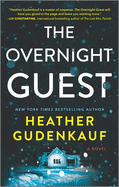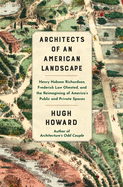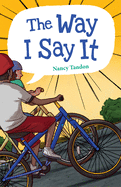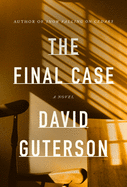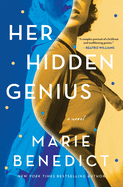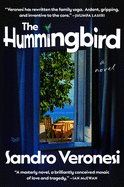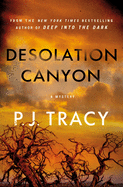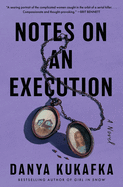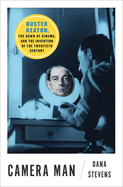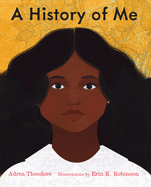Tuesday, January 25, 2022
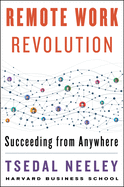 When Harvard Business School professor Tsedal Neeley began writing Remote Work Revolution: Succeeding from Anywhere (Harper Business, $29.99) 20 years ago, she had in mind global companies that successfully united work forces worldwide. Little did she know that a pandemic would lend her discoveries and best practices a sense of urgency at the national, local and personal level. Her book, offering ideas on inclusiveness, crossing cultural and language barriers, and encouraging all voices in the virtual room, closes each chapter with an "action guide" of practical tips.
When Harvard Business School professor Tsedal Neeley began writing Remote Work Revolution: Succeeding from Anywhere (Harper Business, $29.99) 20 years ago, she had in mind global companies that successfully united work forces worldwide. Little did she know that a pandemic would lend her discoveries and best practices a sense of urgency at the national, local and personal level. Her book, offering ideas on inclusiveness, crossing cultural and language barriers, and encouraging all voices in the virtual room, closes each chapter with an "action guide" of practical tips.
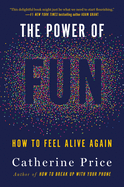 The dividing line between your house as a gathering place for both family and friends as well as (virtual) colleagues can be elusive. How does one step away from the desk for a lunch break or to walk the dog, and return to it somewhat refreshed and reinvigorated? Catherine Price offers some ideas in The Power of Fun: How to Feel Alive Again (Dial, $27) with her emphasis on smaller moments of playfulness ("Everyday Fun") rather than going for the kind of "Peak Fun" associated with the (sometimes unrealized) goal of saved-up-for faraway vacations. She emphasizes the importance of continuing to learn and grow in incremental ways--beginning with stepping away from technology.
The dividing line between your house as a gathering place for both family and friends as well as (virtual) colleagues can be elusive. How does one step away from the desk for a lunch break or to walk the dog, and return to it somewhat refreshed and reinvigorated? Catherine Price offers some ideas in The Power of Fun: How to Feel Alive Again (Dial, $27) with her emphasis on smaller moments of playfulness ("Everyday Fun") rather than going for the kind of "Peak Fun" associated with the (sometimes unrealized) goal of saved-up-for faraway vacations. She emphasizes the importance of continuing to learn and grow in incremental ways--beginning with stepping away from technology.
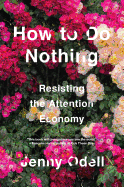 Jenny Odell describes her book How to Do Nothing: Resisting the Attention Economy (Melville House, $17.99) as "a field guide to doing nothing as an act of political resistance to the attention economy." She uses the principles of the Eight Hour Day Movement--"eight hours for work, eight hours for sleep and eight hours for what you will"--to remind readers of the importance of consciously setting aside time in the day to pay attention to a piece of art, stroll through a neighborhood park, and connect with the people around us and who matter to us. --Jennifer M. Brown, senior editor, Shelf Awareness
Jenny Odell describes her book How to Do Nothing: Resisting the Attention Economy (Melville House, $17.99) as "a field guide to doing nothing as an act of political resistance to the attention economy." She uses the principles of the Eight Hour Day Movement--"eight hours for work, eight hours for sleep and eight hours for what you will"--to remind readers of the importance of consciously setting aside time in the day to pay attention to a piece of art, stroll through a neighborhood park, and connect with the people around us and who matter to us. --Jennifer M. Brown, senior editor, Shelf Awareness
The Final Case
by David Guterson
David Guterson (Ed King; Snow Falling on Cedars) returns to the courtroom with The Final Case. His opening note outlines the real-life 2011 trial of parents in Skagit County, Wash., charged with the death of their adopted daughter from Ethiopia. The author "attended the trial, and conducted research and interviews in both the U.S. and Ethiopia, but--to be clear--this book is a work of fiction."
Guterson spotlights the tragedy, but in relying on an unnamed, first-person narrator who lacks direct connection to the victim, he creates a protective distance in converting fact into fiction. The narrator is a writer who has recently "quit": "I'm not interested anymore." For now, he serves as willing chauffeur for his criminal attorney father, Royal. At 84, Royal still goes to his office, never mind an empty caseload. After an unexpected call, the son ferries Royal to the Skagit County jail to meet Betsy Harvey, arrested with her husband, Delvin, for homicide. Betsy is 41, mother of seven children, conservative and fundamentalist Christian. Betsy and Delvin adopted Abeba Addisu from Ethiopia and molded her into Abigail Harvey; they're charged with having "abused the girl until she'd died in their yard." Abhorrence aside, Royal explains to his son, "They might have done the most evil things you can imagine... but if what they did doesn't conform to what they're charged with, then they're innocent." And so the journey begins to comprehend Abeba/Abigail's fate that final night.
With taut control, Guterson creates a superb courtroom drama filled with characters endowed with intricate histories that eschew snap judgments. He adroitly questions and condemns white savior entitlement, complicit abuse, repeated failures of the law and, undoubtedly, achieves justice. --Terry Hong, Smithsonian BookDragon
Discover: This superb novel--inspired by an actual court case--confronts the multi-layered failures of family, community and a legal system that allowed a girl adopted from Ethiopia to die in her own backyard.
Her Hidden Genius
by Marie Benedict
In Her Hidden Genius, Marie Benedict once again illuminates a woman overlooked by history, as she did with the neglected brilliance of Hedy Lamarr in The Only Woman in the Room and Mileva Maric in The Other Einstein. Benedict's sixth novel presents an accessible story of physical chemist Rosalind Franklin's breakthrough DNA discoveries, as well as her bold presence in male-dominated mid-20th-century science.
Despite her family's pleas, Franklin leaves postwar London in 1947 for Paris--"a place where the Nazis... once governed," her father laments--to work as a researcher with X-ray crystallography. Her lifelong mantra guides her: "Focus on the science." Though her research is successful and Paris is "the only place" she ever "fit in," an awkward romance with a colleague prompts her return to London. She thrives in the King's College lab but endures misogyny and disrespect, addressed as "Miss Franklin" or the dismissive "Rosy" rather than "Doctor." More disturbing are the obvious appropriations of her work, groundbreaking photographic evidence of her helix theory, by fellow scientists seeking to claim the discovery of the structure of DNA. In fact, three of her peers won the 1962 Nobel Prize for DNA research; she was not acknowledged.
"I am a scientist, first and always," Franklin declares, but she was also a good friend, a loyal daughter and an enthusiastic hiker. Benedict (The Mystery of Mrs. Christie) presents a complex woman, while foreshadowing her fatal illness--suggesting her strong work ethic led to dangerous X-ray exposure. Her Hidden Genius is an overdue testimony to a fascinating scientist. --Cheryl McKeon, Book House of Stuyvesant Plaza, Albany, N.Y.
Discover: Marie Benedict's sixth novel is an overdue portrait of Rosalind Franklin, who played an integral role in the discovery of DNA while enduring chauvinism in her commitment to science.
The Hummingbird
by Sandro Veronesi, transl. by Elena Pala
The Hummingbird by Sandro Veronesi (Quiet Chaos; The Force of the Past), translated from the Italian by Elena Pala, is a shape-shifting, multigenerational novel of family, love, loss, joy, change and pain.
When readers meet Marco Carrera, the year is 1999 and he is a 40-year-old ophthalmologist in Rome, about to meet destiny in the form of a psychoanalyst breaking his confidentiality oath. From here, chapters jump back and forth in time from 1960 to 2030. Readers meet the great love of Marco's life, visit his childhood, witness his marriage and divorce. When he is just a boy, Marco stops growing, remaining small and childlike well into his teenage years: his mother nicknames him "the hummingbird" for his stature, a moniker that will echo into his adulthood. He becomes a father and eventually a grandfather, so that four generations of his family flash kaleidoscopically across these pages; Marco is ever at the novel's center, however, even as he is accused of holding still through life's storms. "You can keep still as time flows around you, you can stop it flowing, sometimes you can turn back time, even--just like a hummingbird, you can fly backwards and retrieve lost time." The novel mimics this movement with its nearly stop-action chronology.
The Hummingbird is clearly an intellectual exercise, but can also be read more simply as a story about a single, deceptively ordinary life. Packed with pathos, humor and tragedy, it ends with both a quiet goodbye and a crescendo, the only fitting end to such an unobtrusive but resounding life. --Julia Kastner, librarian and blogger at pagesofjulia
Discover: This family saga set in Italy, with one life at its center, is moving, literary, philosophical and multi-layered.
Perpetual West
by Mesha Maren
To compress Mesha Maren's exhilarating second novel, Perpetual West, into a quick description would be an injustice to her intricately plotted, unsettling narrative about two 21-year-olds unsure of who they really are. Whereas her debut, Sugar Run, had its characters return to Maren's home landscape of rural West Virginia, Perpetual West removes a young couple from their West Virginia upbringing cross-country to the El Paso/Ciudad Juárez border for startling, transforming discoveries.
Elana and Alex met at 17, when Elana was a high school junior and precocious Alex already a Hall College freshman. Elana's father, Meyer, is "an undergraduate history professor at [Hall] an unknown liberal arts college in bumf*ck Virginia." Elana was raised in rural West Virginia by her maternal grandmother after her mother died giving birth to Elana's brother, Simon; the siblings eventually reunited with Meyer. Alex was a scholarship student whose academic promise landed him a room in Meyer's home. Six months later, Elana and Alex married because Alex, a transracial adoptee from Juárez raised by Pentecostal parents, couldn't, wouldn't, have sex before marriage. Meyer's only comment? "Wow, huh, seems almost a little incestuous."
Four years later, in August 2005, Elana and Alex drive west to start their University of Texas El Paso degrees: a sociology master's for Alex, undergrad English for Elana. Initially, they try living on the Juárez side of the U.S./Mexico border. After a brief attempt to expand Alex's origin story--"tiny dark-eyed baby nestled inside the clothing donation box outside the Heart Cry Holiness Mission House of Juárez, yellow blanket, no note"--the pair settle in El Paso at Elana's urging: "Elana didn't understand why he wanted to spend so much time in Juárez when El Paso was full of people like him who looked Mexican but didn't speak perfect Spanish." Alex, understandably, wants to experience his heritage. "It was the friction that he liked, though. He couldn't pick up where he had left off as an infant, no, of course not, he would never be Mexican like that, but here in Juárez he felt like he was being etched into a more precise version of himself. Instead of carrying around with him the face of a country and people he did not know, he was joining himself here--not finding himself, that was stupid and cheesy, no, he was joining himself."
Already, Elana and Alex are diverging. Elana is skipping classes and working at Susie's Tex-Mex Café. Alex goes south at every opportunity, mostly to Kasa de Kultura, a collective house filled with anti-government activists and artists. He's recently changed his thesis topic from "the psychogeography of accountability" to lucha libre, masked Mexican wrestling both flamboyant and menacing. His adviser thinks he's genius to explore "how it's a staging ground for contradictory sociological domains: tradition and modernity, violence and security, machismo and feminism."
By December, their separation becomes literal--although initially not intentional. Elana travels to Virginia to welcome her brother, Simon, home from rehab. A month after Elana and Alex's move west, Simon, demanding cash for his next hit, threatened Meyer with a knife; Meyer had him committed. With Elana gone, Alex goes to Juárez, to Mateo, a lucha libre champion with whom he's been having an affair. Mateo is facing his own complications--his wrestling promotion agency has sold him to a ruthless cartel boss. A last-ditch escape attempt traps Alex in Mateo's dangerous vortex. When Elana returns, Alex has disappeared. From dark basements to mansion roof decks, questions multiply, answers elude her.
Maren masterfully crafts flawed yet deeply empathic protagonists unsure of how to live their own lives. Elana and Alex, despite bonding as teens, know virtually nothing about each other as adults; each presents "a prefab identity," Elana later muses. She can't tell Alex (or her father) she's quitting school. Alex has dismissed his attraction to men ever since--well, ever since he's been attracted to men. Without looming controls--Elana her family, Alex his upbringing--the pair become virtually unrecognizable. Beyond remarkable characters, Maren slyly hones seemingly minor details into narrative dominance: Simon's homecoming leads to revelations about his drug abuse enabled by a maternal uncle; the prevalence of opioid addiction; his "My Higher Power is Jesus Christ"-Narcotics Anonymous reinvention--all of which Maren will adroitly connect to white-savior syndrome, NAFTA-induced corruption, drug cartels and religious salvation.
Enhancing her dynamic cast is Maren's remarkable ability to create a sense of place with just a few phrases and sentences: Elana's grandmother's dilapidated remote farmhouse is "too proud to crumble," still standing "among the clotheslines and cannibalized cars" guarded by a pit bull "chained with a BEWARE OF DOG sign hanging from his neck." Mateo's rented room, where Alex spends his first night away from Elana, has windows that "overlooked the pickup basketball games on Camomila, dogs snuffling through trash, an old woman sweeping her steps as she waited for the water truck; the other ones looked onto... the pink lights of Tito's Sex Shop and Playboy Disco across the way."
Maren's people, their landscapes, create an immersive experience, made memorable for all the twists and turns that never quite lead to a straightaway. A chimerical storyteller, Maren writes with candor and grit, refusing likely endings, searching for--but never promising--new beginnings. --Terry Hong
Mystery & Thriller
The Overnight Guest
by Heather Gudenkauf
A terrifying thriller crafted by an acclaimed master of the genre, Heather Gudenkauf's The Overnight Guest is set in the town of Burden, Iowa, where a night of murders still haunts its residents. Gudenkauf merges multiple intriguing storylines, exposing readers to both the horror of the crimes as they unfolded in real time and also the long-term implications for those involved.
In the summer of 2000, Josie Doyle invited her friend Becky Allen to a sleepover at Josie's family farm. Before the night was over, several members of Josie's family were dead and Becky was missing. The killings reverberated through the small town and remained an unsolved mystery. Becky was never found.
In the present day, a true-crime author named Wylie Lark has rented the former Doyle homestead as a writing retreat, where she intends to complete a book about the 20-year-old murders. A loner, she welcomes the isolation of the farmhouse in the dead of winter with only a stray dog, Tas, for company. During a raging blizzard, Wylie discovers a boy lying on the ground outside, glistening "like an ice sculpture," and notices an overturned car on the main road. Worried about what or who else might be out there, she has to get through the stormy night until help can arrive.
Gudenkauf (This Is How I Lied) is an Iowa native, exploring the state's rural landscape through her novels. As she untangles the mysteries of the past and their connections to Wylie's present, her expertly twisted plot builds unbearable suspense and drama, leading to a thoroughly shocking climax. --Shahina Piyarali, reviewer
Discover: In this riveting thriller, a true-crime writer renting an isolated farmhouse rescues a boy in a snowstorm and unravels the secret to a long-ago crime.
Desolation Canyon
by P.J. Tracy
Emotionally damaged characters who deal with their problems through their compelling need to help others punctuate the impressive Desolation Canyon, the second novel by P.J. Tracy featuring Los Angeles Police detective Margaret Nolan and army veteran Sam Easton.
Margaret struggles to manage her guilt following a shooting in the line of duty, as well as her grief over the death of her brother, Max, a soldier killed in Afghanistan. Margaret's heartbreak is exacerbated by her mother's mourning, so deeply felt that she has distanced herself from her daughter and the rest of her family. Sam, whose scars include irreparable disfigurement to half his face, works through his PTSD by jogging in Desolation Canyon near Death Valley. Margaret and Sam intersect again when he tries to help Marielle, a young woman who has escaped the Children of the Desert compound with her daughter. Though the remote Children of the Desert bills itself as a spiritual retreat, it is a criminal enterprise run by the deceptively charming Father Paul. He is desperate to retrieve his wife, Marielle, and their daughter, whom he considers "stolen property."
As Margaret and Sam deal with their own troubles, the suspense builds in a novel that becomes both a psychological thriller and a gripping police procedural. Margaret and her fellow detectives investigate a body found at the Hotel Bel-Air, the murder of a divorced couple, the decades-old kidnapping of a child and the machinations of a former KGB boss.
Desolation Canyon's riveting, complex plot illustrates the wide-ranging talents of Tracy (Deep into the Dark), who--with her late mother, P.J. Lambrecht--wrote 10 lighter, award-winning novels in the Monkeewrench series. --Oline H. Cogdill, freelance reviewer
Discover: A veteran with PTSD and a police detective team up in a dark, riveting novel that is part psychological thriller and part police procedural.
Notes on an Execution
by Danya Kukafka
Notes on an Execution by thriller writer Danya Kukafka (Girl in Snow) finds Ansel Packer on death row in a Texas prison, scheduled to die in 12 hours. While Ansel plots his escape with the help of a prison guard he believes he's charmed, the novel unfolds the story of Ansel's life through the eyes of the women who've loved, hated and hunted him. There's Lavender, his loving but imperfect mother; Hazel, his wife's twin sister, who can't look away even as she yearns to build her own life; and Saffy, his childhood foster sibling-turned-detective who knows something isn't right. As Ansel's final hour draws closer, these three women work to piece together the fragments of their own stories and the stories of the girls he killed.
Clever in its construction and heartrending in its insights, Notes on an Execution is a raw yet sensitive look at the kind of loss, violence and monstrosity that it is all too easy to oversimplify. While Ansel's present-day, second-person narration is what stitches these stories together, it is ultimately the entangled chorus of women who define the novel. The slow-burn tension of these multiple perspectives captures the resilience required in the face of inevitability, the determination to hope despite the lingering presence of rage and volatile hatred. Saffy's point of view, in particular, while being the most traditionally heroic, helps readers to see that there are no easy heroes or villains, even when one is wanted most. --Alice Martin, freelance writer and editor
Discover: A thoughtful and empathetic portrait of the devastation left in the wake of violence, Notes on an Execution is an atmospheric thriller that doesn't shy away from complexity.
Romance
Seoulmates
by Jen Frederick
Since Hara Wilson and Choi Yujun didn't quite get their happily-ever-after in Heart & Seoul, author Jen Frederick--a transracial Korean adoptee--returns with its addictive sequel, Seoulmates. In the first book, Korea-born, Iowa-raised adoptee Hara's loss of her estranged father prompted a two-week trip to Seoul searching for biological connection. As Seoulmates opens, Hara is installed in her birthmother Choi Wansu's lavish home, employed by Wansu's international conglomerate IF Group and still madly in love with Wansu's stepson, Yujun.
Hara's new life screams tabloid-ready: haters insist Wansu discarded her own fatherless baby to mother Yujun, the child of a rich widower she married for money and power, while Wansu's role as IF's CEO makes it easy for them to dismiss Hara as a mere nakhasan (nepotistic hire). And then there's that wee matter of stepsibling entanglement, which is not only taboo, but such a marriage is illegal in Korea. Beyond family dysfunction, Hara is also dealing with limited linguistic facility, stumbling through cultural hurdles, frustrated in an unsatisfying job and disregarded by snide co-workers. But then again, having two mothers isn't so bad, devoted Yujun remains stalwart, new friends prove true. Hara just needs to recognize which links will lead to the longed-for connections that brought her back to her birth country.
While Seoulmates easily stands alone, continuing audiences will certainly be rewarded with deeper, multi-layered appreciation. Some readers might catch various discrepancies or notice occasional repetitions that could have been edited, but Frederick's accessible writing and savvy narrative twists encourage committed engagement. She nimbly targets anachronistic traditions, social clashes, homophobia--issues challenging cultures anywhere--to enhance a familiar genre. --Terry Hong, Smithsonian BookDragon
Discover: Jen Frederick's enticing sequel to Heart & Seoul delivers a love-conquers-all international romance with a satisfying contemporary bite.
Biography & Memoir
Maybe It's Me: On Being the Wrong Kind of Woman
by Eileen Pollack
It took her until she reached her 60s, but after decades spent as a square peg in a world of round holes, novelist Eileen Pollack (Breaking and Entering) seems to have found something resembling peace. Together, the 16 punchy and agile personal essays in Maybe It's Me: On Being the Wrong Kind of Woman loosely form an autobiography in which its subject takes a feminist look at the forces that forged her identity, or at least tried to.
Pollack was born in 1956, raised in a middle-class Orthodox Jewish household in the Catskills, and essentially batted aside every rule that came her way. "Hallucinations," a meditation on Pollack's retired dentist father's last days, includes a reflection on her decision to choose the writer's life over a stable career in the sciences. In "Pigeons," what begins as a look back at her behavior problems in elementary school becomes a consideration of whether she inadvertently contributed to a classmate's downfall. In fact, many of the essays in Maybe It's Me take this rewardingly unexpected three-point-turn approach to their subjects. "All of Us, We All Are Arameans," initially a travelogue-like piece about Pollack's solo trip to Israel when she was in her 50s, winds up casting her romantic life in stingingly sharp relief: "If I couldn't find a way to share my life with my Polish-Catholic boyfriend, how could I criticize the Israelis and Palestinians for not finding a way to surmount their differences and share their lives?" --Nell Beram, author and freelance writer
Discover: Eileen Pollack's nimble and spirited collection of 16 personal essays is about finding peace after decades spent as a square peg in a world of round holes.
Camera Man: Buster Keaton, the Dawn of Cinema, and the Invention of the Twentieth Century
by Dana Stevens
Film critic Dana Stevens's Camera Man takes on three substantial tasks and succeeds masterfully. She creates a compelling biography portraying Buster Keaton's volatile life, astutely assesses his films and puts both in the context of world events and innovations that were happening at the time. Keaton was successful in three different mediums at their creative peaks: first his 17 years as a juvenile slapstick prodigy in vaudeville, then silent films and finally TV during its experimental early years. But Keaton's successful career masked a troubled private life. "He was an atrociously terrible businessman, an indifferent celebrity, and, until late in his life, a dilatory husband and father at best," writes Stevens.
Keaton was an innovative filmmaker who exercised complete artistic control over his films. In his heyday, the 1920s, he produced, directed and starred in comedic masterpieces like The General, The Navigator and Sherlock Jr. Though he was somewhat overshadowed by Charlie Chaplin and Harold Lloyd, today critics regard him as one of the greatest comic filmmakers of all time. His directorial career was cut short by the advent of sound, by losing his independence after moving to MGM studios and by his alcoholism. He became sober within a few years but his return to MGM was as a script doctor and, later, supporting player.
Camera Man feels fresh in its research because Stevens is exceptionally adept at sifting through decades of myths to find the truth. Even Keaton's own 1960 as-told-to memoir is corrected. Camera Man crafts a compelling and surprisingly upbeat story of a beloved, troubled but resilient comedian. --Kevin Howell, independent reviewer and marketing consultant
Discover: Slapstick filmmaker Buster Keaton is given historical context in a masterful and compelling biography that corrects decades of misinformation.
House & Home
Architects of an American Landscape: Henry Hobson Richardson, Frederick Law Olmsted, and the Reimagining of America's Public and Private Spaces
by Hugh Howard
Upon finishing Architects of an American Landscape: Henry Hobson Richardson, Frederick Law Olmsted, and the Reimagining of America's Public and Private Spaces, readers may be inclined to add Richardson's and Olmsted's names to the list of history's great odd couples. Hugh Howard has written a stirring dual biography, documenting how his diametrically opposed subjects' collaborations throughout their two-decade friendship yielded era-defining and enduringly influential design work.
Raised in Hartford, Conn., landscape designer Frederick Law Olmsted (1822-1903) was a pragmatist, an autodidact and an occasional depressive who saw his work on public parks--first and most famously Central Park--as a democratic imperative. Architect Henry Hobson Richardson (1838-1886), a wealthy son of New Orleans, was an École des Beaux Arts-educated, apolitical dreamer given to overindulgence. The two never formed an official partnership, but through their joint efforts on libraries, rail stations, a psychiatric hospital and other commissions, the friends, in Howard's words, "employed the gifts of nature and their innate passion for beauty to redefine the country's rapidly changing landscape."
While Olmsted's name remains well-known, Richardson, whose taste for open plans and shingling were major influences on domestic architecture, has been largely forgotten outside architect circles. In his acknowledgments, Howard (Mr. and Mrs. Madison's War) writes of his hope that his book will "help bring Richardson back into the mainstream conversation." The text of Architects of an American Landscape gives readers much to discuss, as do the book's several dozen illustrations, which include architectural plans that are works of art unto themselves. --Nell Beram, author and freelance writer
Discover: This rousing dual biography of two titans of 19th-century design presents an odd couple whose collaborations have indelibly enhanced the American landscape.
Children's & Young Adult
The Way I Say It
by Nancy Tandon
Middle school can be a minefield, especially when something sets a kid apart. In this honest and funny novel, first-time author Nancy Tandon's empathic account of one boy's trials is likely to strike a chord with many readers.
Starting sixth grade with a speech impediment and an ex-best friend who mocks you with his new friends is the kind of worst-case scenario no kid wants. Eleven-year-old Rory is dreading the school year, so he's surprised when his favorite time of day turns out to be speech therapy. Mr. Simms's unorthodox approach to helping him master his "stupid r sound" and find his sense of self is just what Rory needs. But when his former friend Brent sustains a traumatic head injury and joins him in speech therapy, Rory is not sure he can muster the strength to be supportive, even though Brent is now being bullied by the very friends he left Rory for. "No one made him do... any of the other awful stuff he's done to me. So why should I care if he's hurting now?" Working together on a project about boxer Muhammad Ali brings the boys together as they begin to understand Ali's--and each other's--struggles.
Tandon's experience as a speech-language pathologist and a professor of child language development makes her especially qualified to write about Rory's challenges. But it's her ability to connect readers to the characters and their concerns meaningfully that makes The Way I Say It an exquisite read for any kid. --Emilie Coulter, freelance writer and editor
Discover: In this accessible and sensitive novel, a sixth-grader confronts a speech impediment, bullying and his own impulse to turn his back on the friend who betrayed him.
A History of Me
by Adrea Theodore, illus. by Erin Robinson
Adrea Theodore unpacks the experience of being the only brown or Black student in a classroom in her sensitive picture book debut, A History of Me, dynamically illustrated by Erin K. Robinson (Brave. Black. First).
The first-person narrator--a combination of Theodore herself and her daughter--is "the only brown person in class." When discussing slavery, she can feel every set of eyes on her: "I wanted to slide out of my seat and onto the floor." The girl's discomfort leads to a conversation with her mother, who tells the girl about similar experiences she and other family members encountered growing up: the girl's great-grandmother attended school only through third grade; her mother wasn't allowed to attend nursing school. The girl becomes a woman with a daughter of her own who is the only brown person in her class. The woman uses this as an opportunity to provide perspective about their racial heritage: "just because no one ever mentions courage, strength, intelligence, or creativity, that doesn't mean it isn't there." Now the new student has the work and wisdom of her ancestors to bolster her--she knows she is "free to be anything."
Theodore, as a woman of color, a parent and a pediatrician, is well attuned to the detrimental impact that being educated in predominately white environments can have on young children. The author acknowledges the prejudice and exclusion that generations of their family have experienced, while also imparting an inspirational message through culturally affirming language. Robinson's evocative digital art features soft-focused portraits in the forefront with contemporary backgrounds, and creatively rendered, abstract historical scenes. Personal notes from the author and illustrator add emotional depth. --Rachel Werner, author and teaching artist at Hugo House, Lighthouse Writers Workshop and The Loft Literary Center
Discover: A child discovers how to rise above isolation at school in a compassionate and rewarding picture book that portrays how self-esteem and racial pride intersect.


